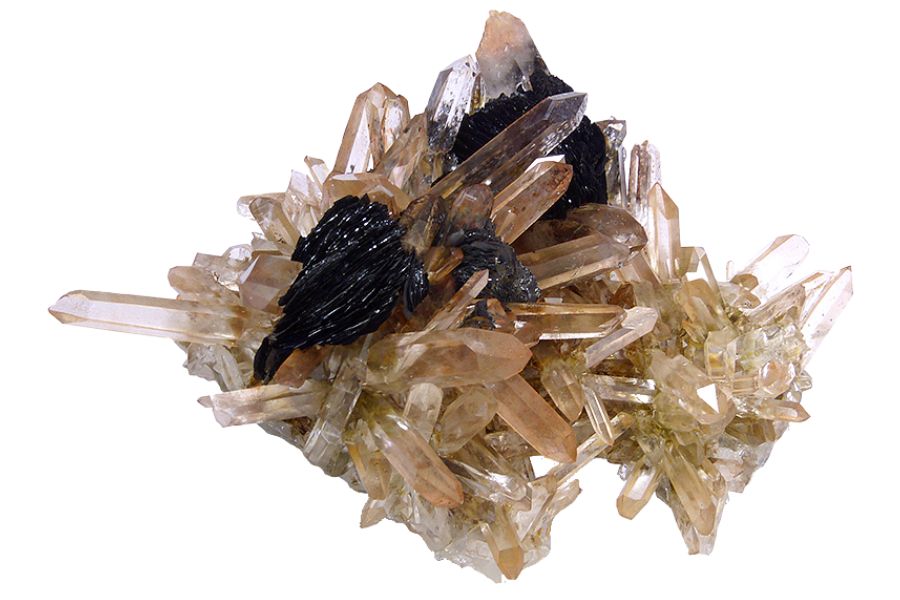The desert landscapes of Arizona hide countless sparkles of quartz, waiting for keen eyes to discover them. We’ve learned that quartz can pop up in a variety of places, from the dusty trails of old mines to the rugged mountains and serene desert plains.
Knowing how to find quartz is key, and it’s often found in places like mountains, riverbeds, and old mining areas. Places like Quartzite, the Four Peaks Wilderness Area, the Hualapai Mountains, and many more are good spots to look.
We can share our expertise to make your experience successful. Our guidance includes the best spots to look and essential tips for a fruitful search.
What Is Arizona Quartz Anyway?
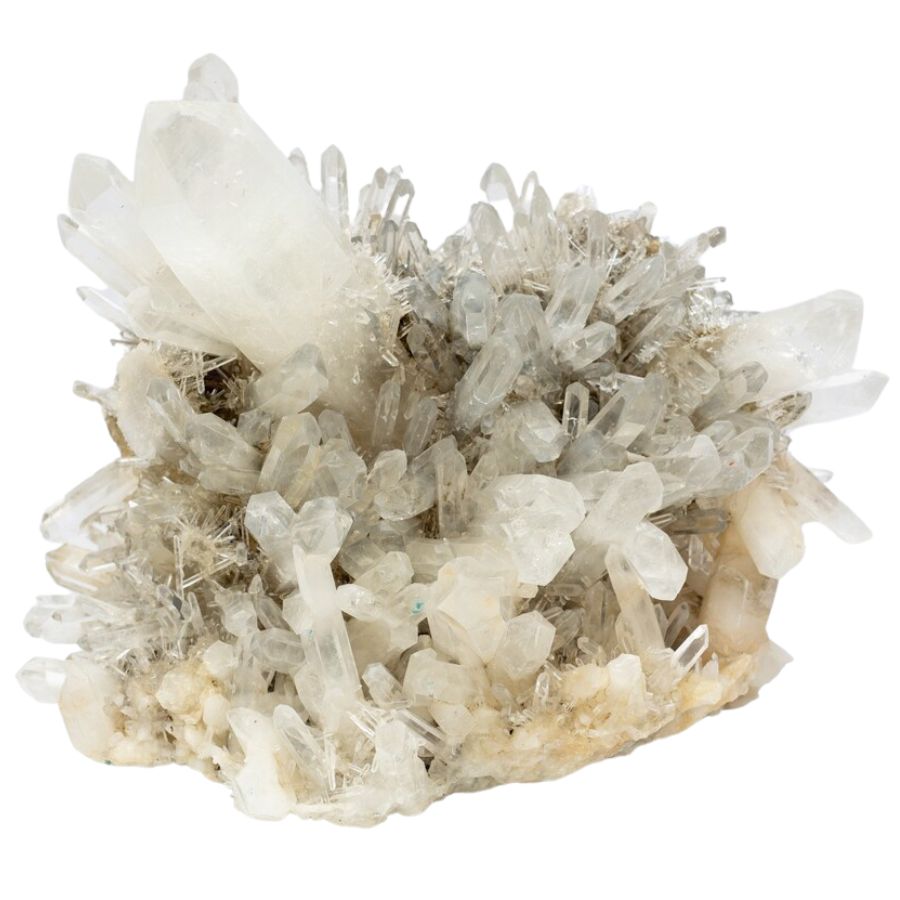
Quartz is made of silicon and oxygen, two of the most common elements on Earth. Knowing how to identify quartz is pretty straightforward – it’s usually clear or white, but it can also be other colors.
It has a glassy luster and is harder than a knife blade. If you hit it with a hammer, it breaks into jagged pieces, not smooth curves.
We usually find quartz in a variety of environments. It’s common in mountainous areas and in the ground where volcanoes used to be. You can also find it in riverbeds and beaches, tumbled smooth by water over time.
In deserts, quartz crystals can pop up among the sand, glistening under the sun. Sometimes, we discover it in large veins running through rocks in mines or deep in the earth.
Understanding what quartz is worth goes beyond its monetary value. Sure, some types of quartz, like clear, well-formed crystals, can be valuable to collectors.
But it’s also used in making watches and even electronics because it can carry an electrical charge.
The Types Of Quartz Found In Arizona
From the clear, sparkling beauty of rock crystal to the deep purple of amethyst, Arizona’s quartz is a rainbow of colors and types. Let’s explore these different types of quartz in the state:
- Clear Quartz
- Amethyst
- Citrine
- Rose Quartz
- Smoky Quartz
- Chalcedony
- Milky Quartz
- Rutilated Quartz
- Prasiolite
For those eager to learn more, our guide to finding and collecting these crystals in Arizona provides great insights. It’s packed with tips and locations to help you on your journey to discover the diverse quartz varieties that Arizona has to offer.
- The deep experience and understanding of our team about the area
- Recommendations from local groups and clubs
- How easy it is to get the a particular location
- Safety and potential hazards when collecting
- Weighing private and public locations
- The ability for both experienced and novice geode enthusiasts to find great samples
With these factors in mind we’ve been able to put together a fantastic list that just about anyone can use!
The Best Places To Find Quartz in Arizona
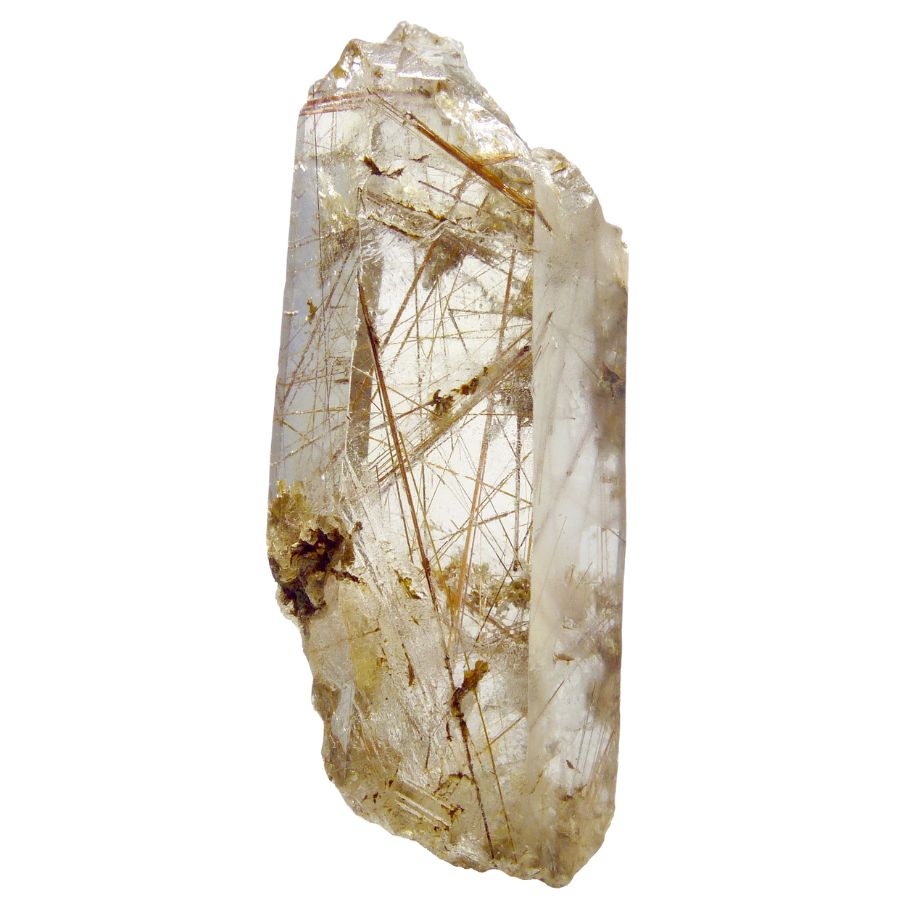
Searching for quartz in the wild can be a real adventure, but it’s not always easy. Having someone who knows the best spots and what to look for makes a huge difference.
For those who are keen to dive deeper into this hobby, there’s a lot to learn about how to mine gems in Arizona. We’ve found that with the right guidance, finding quartz can turn into a successful and exciting journey.
Check out our top five picks for the best stops to search for quartz in the state:
Always Confirm Access and Collection Rules!
Before heading out to any of the locations on our list you need to confirm access requirements and collection rules for both public and private locations directly with the location. We haven’t personally verified every location and the access requirements and collection rules often change without notice.
Many of the locations we mention will not allow collecting but are still great places for those who love to find beautiful rocks and minerals in the wild without keeping them. We also can’t guarantee you will find anything in these locations since they are constantly changing.
Always get updated information directly from the source ahead of time to ensure responsible rockhounding. If you want even more current options it’s always a good idea to contact local rock and mineral clubs and groups
Quartzsite
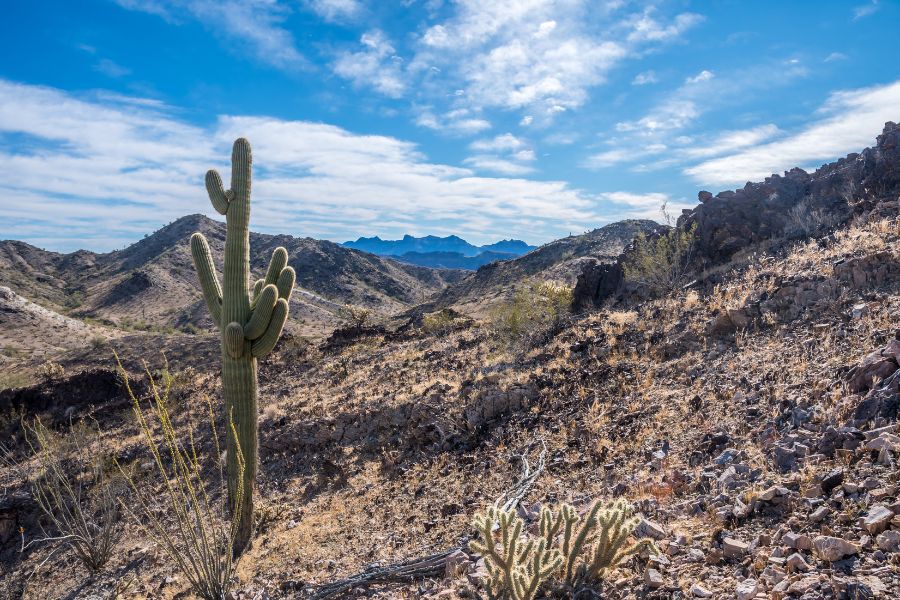
Quartzsite sits in a unique spot where the Colorado Desert meets a mountainous backdrop, creating a landscape that’s both flat and rugged. The area’s geology is a mix of desert plains and rocky hills.
The soil here is mostly sandy, peppered with an array of rocks and minerals that have been brought to the surface by natural processes over time.
Quartzsite’s terrain is quite diverse. The flat desert areas are accessible and great for beginners, while the hilly regions require a bit more effort to navigate.
These hills are where we often find the most interesting specimens. The area is rich in a variety of minerals, not just quartz.
When planning a trip to this area, it’s crucial to remember that responsible rock collecting is key. We always check with the Arizona Bureau of Land Management (BLM) to understand the current guidelines and rules for collecting rocks.
Where we found quartz in Quartzsite
Look in the desert plains, especially after a rainstorm. That’s typically when new pieces are uncovered.
The nearby hills are another favorite spot of ours; they’re a bit more challenging to hike, but that’s where some of the larger and more unique quartz specimens can be found.
DON'T MISS OUT ON ANY GREAT FINDS!
While you're out searching for Crystals you're going to find A LOT of other interesting rocks and minerals along the way. The last thing you want to do is toss out something really interesting or valuable. It can be easy to misidentify things without a little guidance.
We've put together a fantastic field guide that makes identifying 140 of the most interesting and valuable rocks and minerals you will find REALLY EASY. It's simple to use, really durable, and will allow you to identify just about any rock and mineral you come across. Make sure you bring it along on your hunt!
Cochise County
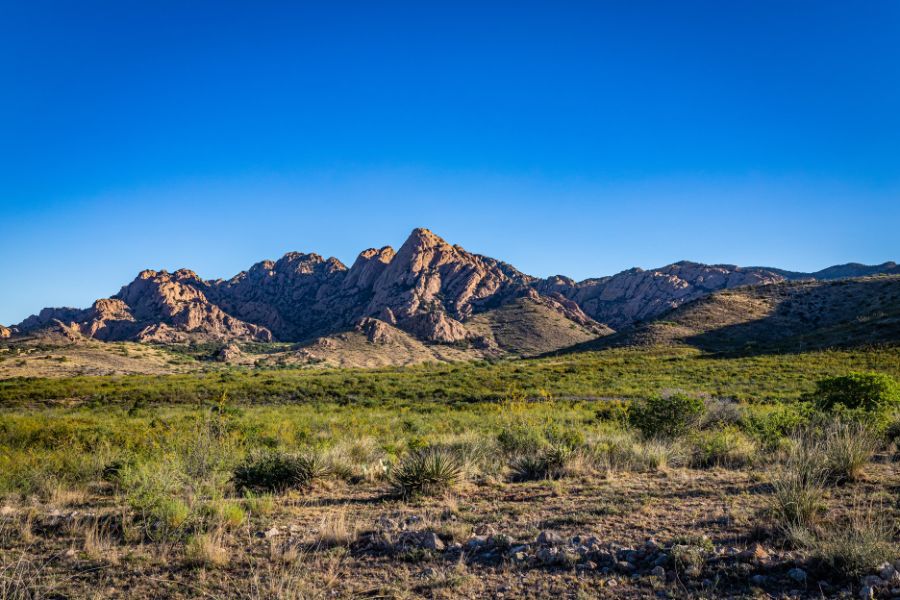
Cochise County is full of rolling plains stretching out to rugged mountains that touch the sky. When we explore here, we’re always struck by the diverse landscapes, from the vast grasslands to the towering Chiricahua Mountains.
The county’s hills and valleys are home to a mix of desert and forest environments, making it a fascinating area for both casual hikers and serious collectors.
In the valleys, you’ll come across streams and rivers that have carved their way through the landscape, revealing layers of rock and mineral history.
Where we found quartz in Cochise County
You can find quartz in the mountains that spread across the county, where the natural erosion exposes various quartz specimens.
The mining districts are also hotspots for discovering different forms of quartz, as are the numerous canyons that but through the landscape. Exploring around towns like Bisbee, Benson, and Paradise has also proven to be successful.
Maricopa County
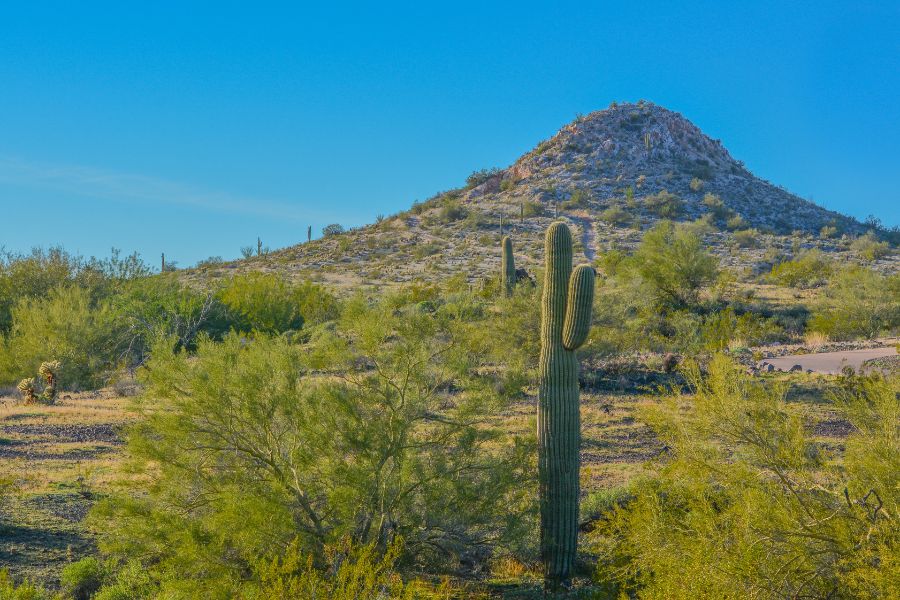
Maricopa County has vast, flat desert areas that seamlessly transition into rugged, mountainous terrain, with rocky outcrops and hidden valleys. The geology here is a mix of sedimentary, metamorphic, and igneous rocks.
The county’s river valleys, with their rich deposits, are exciting places to explore for different minerals and rocks. We especially enjoy the challenge of navigating the mountainous areas, where each turn can reveal something new.
The county boasts spots like the Painted Rock Petroglyph Site and Campground, where the rock art gives a glimpse into the history and culture of the area’s early inhabitants.
The Gila River and the Agua Fria River, winding through the county, have carved out unique landscapes and deposited various minerals and rocks over time.
Where we found quartz in Maricopa County
We’ve found quartz in the mountains that span the county, where natural erosion often brings these crystals to the surface. The county’s rivers also uncover and deposit quartz along their banks, making them great spots for us to explore.
Old mines scattered across the county are another source of quartz, especially in areas where mining activity has ceased.
Towns like Tonopah and Wickenburg, surrounded by geologically rich environments, have been particularly rewarding for us in our quest to find unique quartz specimens.
Four Peaks Wilderness Area
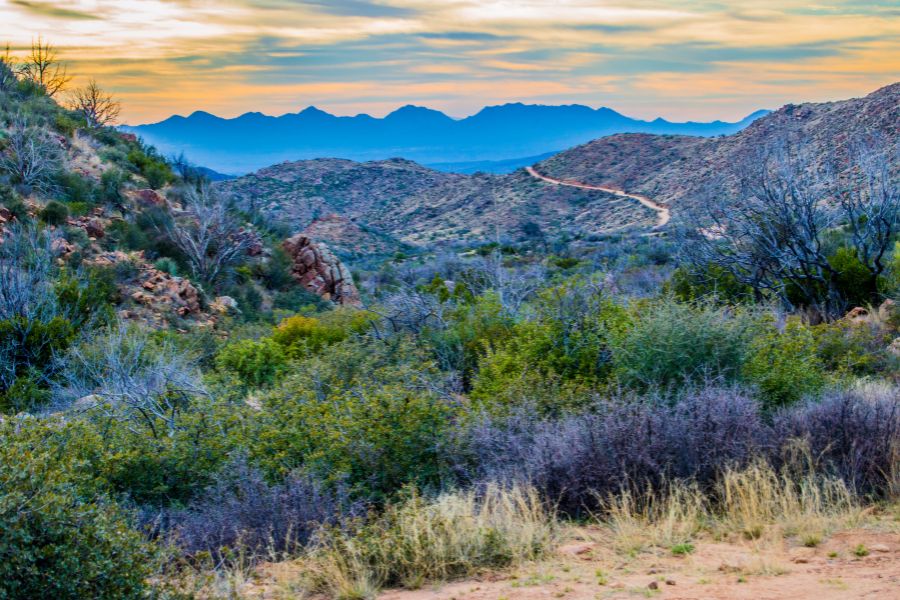
The Four Peaks Wilderness Area is defined by the prominent Four Peaks, a series of rugged, towering mountains that dominate the skyline. The terrain here ranges from steep, rocky cliffs to dense forests and meandering streams.
This region is also known for its deposits of Arizona quartz, especially amethyst, which attracts rockhounds from all over.
Hiking through the area, we’ve found that each trail offers a different glimpse into the geological wonders of the Four Peaks.
Where we found quartz in Four Peaks Wilderness Area
You can search for quartz in a variety of places, from the mountain slopes to the valleys below. The higher elevations, especially around the peaks themselves, are where you can spot quartz, including the famous amethyst variety.
Hualapai Mountains
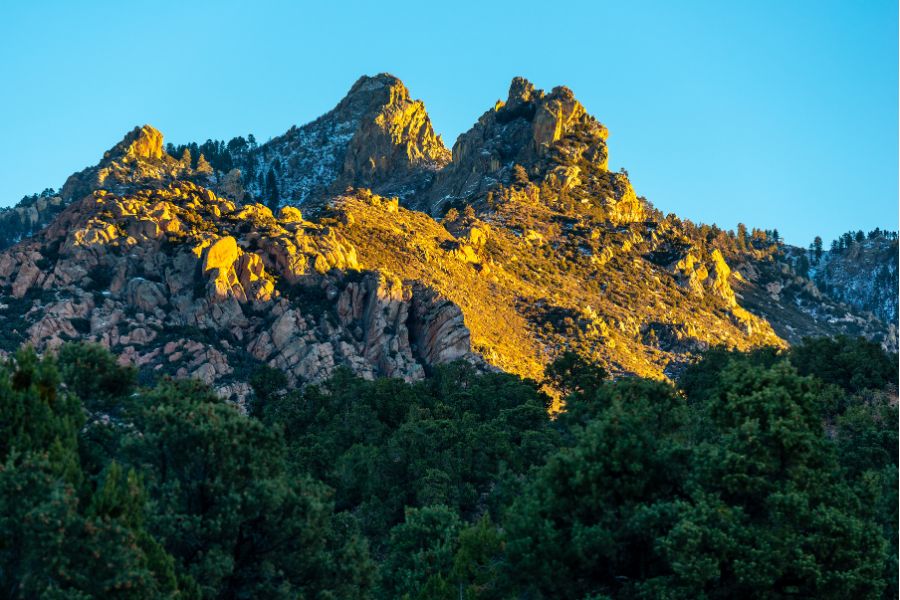
The Hualapai Mountains are special because they’re not just one type of rock; there’s a fascinating blend of granite, gneiss, and schist.
This diversity in rock types is a geologist’s dream, offering a window into the complex processes that shape our planet.
Steep cliffs and deep canyons characterize the area. The geology here tells a story of ancient volcanic activity and the slow but relentless forces of erosion.
We’ve also noticed that the varied terrain creates different kinds of areas, from cool, shady forests to sunny, open slopes.
Where we found quartz in Hualapai Mountains
Quartz can be found along the rocky slopes of the mountains and near stream beds. The higher elevations of the mountains are particularly good spots, where quartz often emerges among the granite and gneiss outcrops.
Other Great Places To Find Arizona Quartz
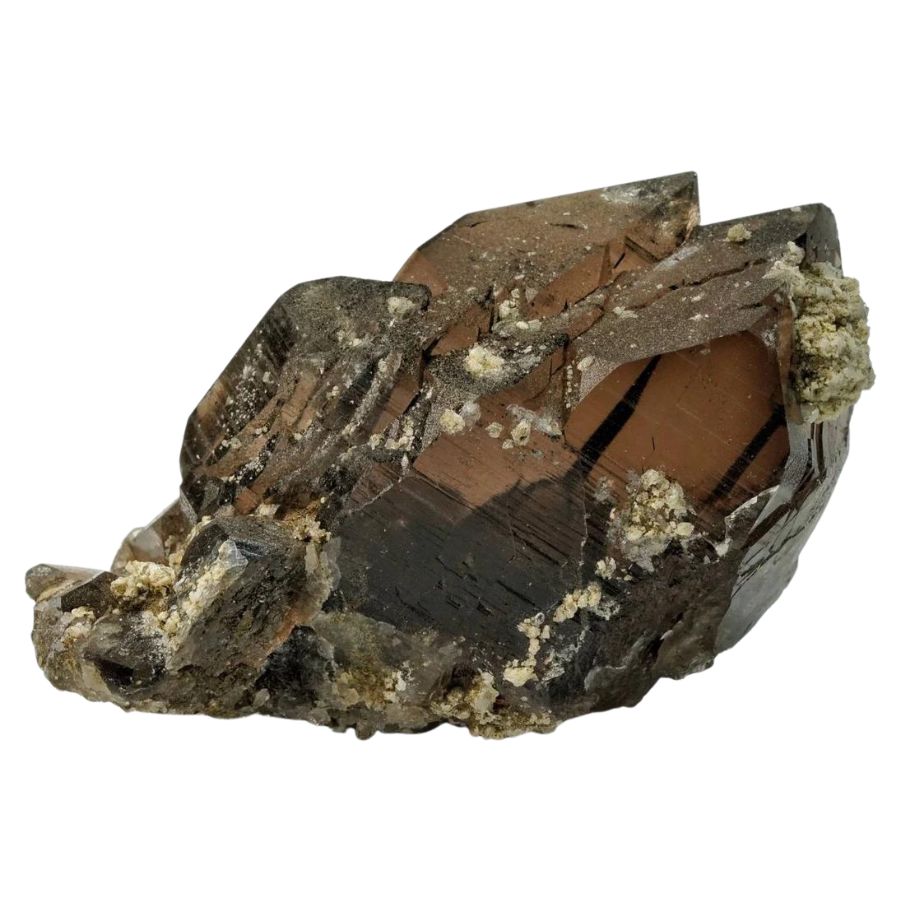
In our adventures, we’ve learned that Arizona’s varied landscapes are home to an abundance of quartz. Here’s a list of places where our journeys have led us to find beautiful quartz specimens:
Our recommendations by county
| County | Location |
| Apache County | Lukachukai Mountains |
| Apache County | Petrified Forest National Park |
| Apache County | Springerville |
| Cochise County | Whetstone Mountains |
| Coconino County | Mohawk Canyon |
| Coconino County | Grand Canyon Village |
| Coconino County | Marble Canyon |
| Gila County | Bucket Mountain area |
| Gila County | Copper Hill |
| Gila County | Mazatzal Mountains |
| Gila County | Pinal Mountains |
| Graham County | Aravaipa |
| Graham County | Crystal Peak |
| Graham County | Table Mountain |
| Greenlee County | Black Jack Canyon |
| Greenlee County | Morenci |
| Greenlee County | Round Mountain |
| La Paz County | Black Mountains |
| La Paz County | Eagletail Mountains |
| La Paz County | Granite Wash Mountains |
| La Paz County | Harrisburg Valley |
| Mohave County | Hoover Dam area |
| Mohave County | Garnet Mountain |
| Mohave County | Mohave Mountains |
| Mohave County | Peach Springs |
| Navajo County | Apache Iron Mining District |
| Navajo County | Holbrook |
| Navajo County | Mystery Valley |
| Pima and Santa Cruz Counties | Santa Rita Mountains |
| Pima County | Coyote Mountains |
| Pima County | Empire Mountains |
| Pima County | Madera Canyon |
| Pima County | Tucson |
| Pinal County | Gila River Indian Reservation |
| Pinal County | Ironwood Forest National Monument |
| Pinal County | Mineral Mountain area |
| Pinal County | Superior |
| Santa Cruz County | Madera Canyon |
| Santa Cruz County | Oro Blanco Mountains |
| Santa Cruz County | Pajarito Mountains |
| Santa Cruz County | Cottonwood Canyon |
| Yavapai County | Bradshaw City |
| Yavapai County | Slate Creek Canyon |
| Yavapai County | Lonesome Valley |
| Yavapai County | Santa Maria Mountains |
| Yuma and La Paz Counties | Kofa Mountains |
| Yuma County | Castle Dome Mountains |
| Yuma County | Little Horn Mountains |
| Yuma County | Tank Mountains |
Common Quartz-Hunting Questions
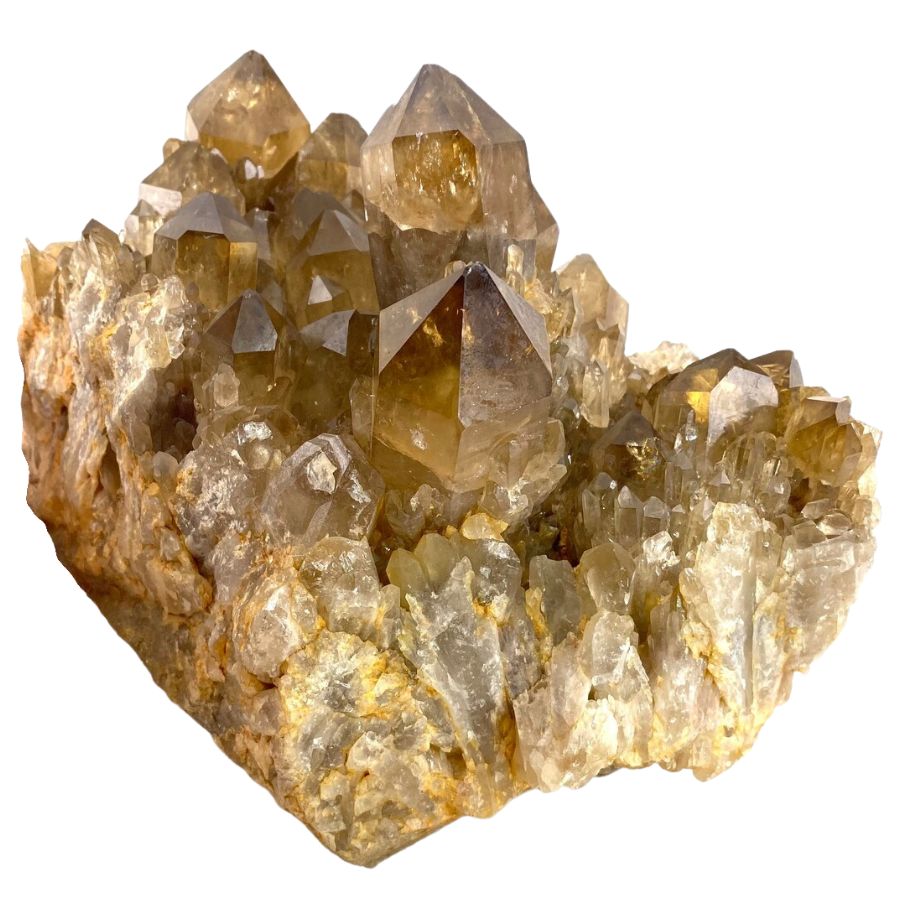
In our time exploring and studying rocks in Arizona, we’ve heard a lot of questions about quartz. We’ll answer the most common ones we’ve heard:
Is it illegal to collect quartz in Arizona?
Collecting quartz in Arizona is generally legal, but there are important rules and regulations to follow. The legality depends on the type of land where the quartz is found.
On public lands managed by the Bureau of Land Management (BLM) and the U.S. Forest Service, recreational rock collecting, including quartz, is usually allowed. However, there are limits on how much you can collect without a permit.
Typically, you can take a small amount for personal use, but selling the quartz or collecting large quantities requires special permission.
On state lands, managed by the Arizona State Land Department, a permit is often required for any rock collecting. This includes areas where to mine for quartz.
Private land is another matter. You must have permission from the landowner to collect quartz on private property. In some areas, especially near active mining operations, collecting can be prohibited for safety reasons.
National parks and monuments are off-limits for rock collecting. Removing any natural material from these areas is illegal.
The Best Places To Buy Quartz In Arizona
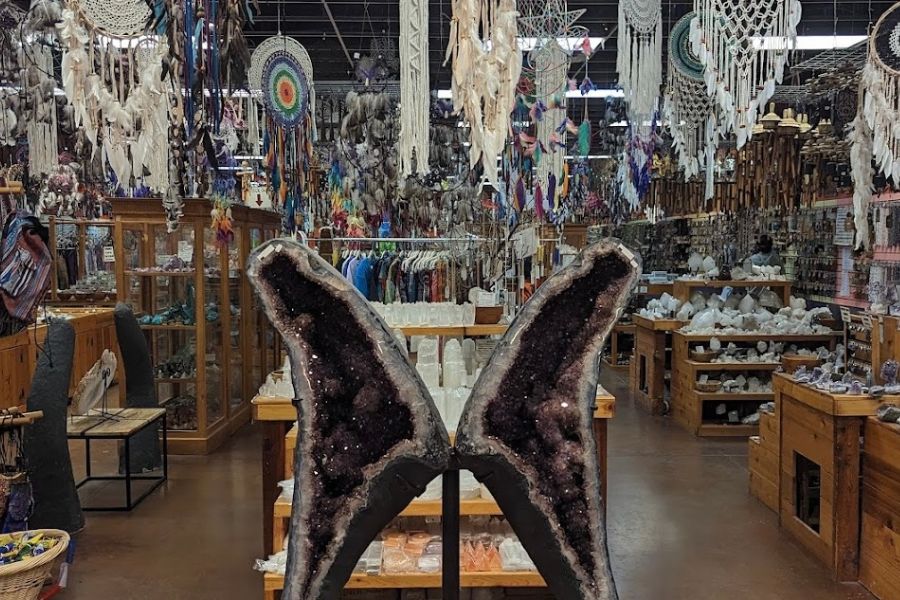
During our travels as geologists, we’ve come across many fantastic shops that sell quartz. Here’s a list of some of the best shops we’ve visited where you can find beautiful quartz for your collection:
- Black Market Minerals – 5000 S Arizona Mills Cir, Tempe, AZ 85282
- Everything Just Rocks – 2235 W 1st St Unit 104-105, Tempe, AZ 85281
- Miners Rock Shop – 1103 W Fairmont Dr, Tempe, AZ 85282
- Natural Expressions, Inc. – 13802 E Williams Field Rd, Gilbert, AZ 85295
- STONES. Crystals, Minerals, Gemstones & Fossil Shop – 7085 E 5th Ave, Scottsdale, AZ 85251

